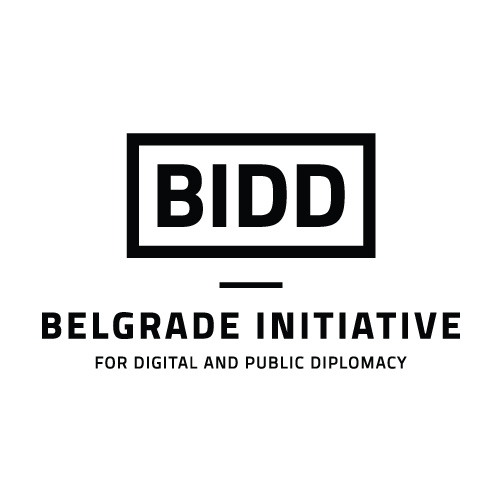Scholars have long since asserted that nations have images. Although scholars differ on what these images consist of, and whether these images can be managed, they nonetheless agree that like consumer brands, nations elicit cognitive associations in people’s minds. Upon hearing the name “Germany”, for example, certain associations may spring to people’s minds be it football championships, precision engineering or the legacy of the Third Reich. Similarly, when hearing the word “Italy” a different set of associations may come to mind including fine art, fashion and pizzas.
If nations do indeed elicit certain associations, then national image management may be understood as an attempt to manage these associations. For example, since the beginning of the Russia-Ukraine War, Ukrainian diplomats have used social media to attempt and create a new association for their state, one best defined by the phrase “Brave Ukraine”. Similarly, in recent years Poland has sought to create a new association for itself as “The First Victim” of Nazi Germany. Online and offline campaigns by the Polish government, along national laws, have attempted to combat the view of Poland as being complicit in the atrocities of The Third Reich. As such, national image management may centre on creating a new association for a state (Brave Ukraine) or altering an existing one (Complicit Poland). Both cases are demonstrative of an attempt to manage a national image in the digital age, mostly through social media.
Yet the digitalization of diplomacy has complicated the task of national image management. This is due to the acceleration of news production and the subsequent acceleration of diplomacy. Today’s world is one of “real time journalism” as people learn about unfolding events in near-real time. Smartphone videos uploaded from demonstrations, police arrests or military altercations circle the globe within minutes while news reports and analyses soon follow. “Real time journalism” has given way to real-time diplomacy as states must now narrate state action, and frame policies in real-time while adapting their messages to local and global news flows. Videos of Ukraine soldiers abandoning their posts or being taken captive demand a swift response from “Brave Ukraine” otherwise its bravery may come into question.
Second, digitalization has led to the fragmentation of digital publics into networks of mediated realities. Put differently, digital publics no longer all derive their news from one source or subscribe to the same version of reality. Rather, digital publics are fragmented into online networks and within each network individuals subscribe to a certain mediated-reality. This mediated-reality is “proven” through algorithmically tailored partisan news reports, questionable videos and doctored images. As many such networks exist in many countries, states can no longer create disseminate a single national Selfie or image. Indeed, there are networks who subscribe to the reality that Russia did not invade Ukraine but sought to counter an impending Ukrainian attack. In other networks, Ukraine is lambasted for igniting a destructive War with Russia while in other networks Ukraine’s secret plan to orchestrate a NATO attack on Russia has brought Europe to the brink of World War Three. None of these networks and their participants would view Ukraine as “Brave” nor would they come to associate Ukraine with bravery.
As such, diplomats and foreign ministries are now required to ask- how can states create and disseminate a national self-image or national Selfie across diverging networks and in real time? This question has now grown even more complex due to the rise of AI. Recent studies indicate that AIs are slowly supplanting search engines as people’s gateway to the internet. More and more people now begin their digital search for information in AI sites such as ChatGPT, Claude and Mistral. One of the reasons for this is the trust that people have in AIs as these tools have been labelled by the media as being incredibly sophisticated and incredibly reliable. In a world where traditional media, state agencies, ministers and diplomats have lost public trust, AI offers a new sanctuary. A verified source of accurate information.
Thus, more and more people now also learn about the world and about states from AI. Instead of reading about the Russia-Ukraine War, AI users may ask ChatGPT for a 500-word summary of war-related events. Rather than follow news reports, AI users may ask ChatGPT about Ukraine’s most recent offensive. And instead of reading news articles about Ukraine’s history and its war effort, Claude users may ask for a list of 10 good things and bad things about Ukraine. The problem lies in the fact that AIs are not accurate or reliable sources of information. Recent studies show that AIs are riddled with inaccuracies and biases. For example, countries from the Global South are consistently depicted on AIs as being inept and suffering from endemic crime and corruption as opposed to Global North countries that are depicted as shining beacons of stable governance. Similarly, Eastern European countries are depicted as lagging behind the West and still being associated with the former Soviet Union. Moreover, AI outputs are determined by their country of origin. AIs from the US argue that America supports Ukraine as both countries are fighting to promote democracy. The European Mistral suggests that America views Ukraine as a buffer zone between NATO and Russia while the Chinese DeepSeek views Ukraine as another site of American imperialism.
Given that AIs are now trusted sources of information, and given that people increasingly turn to AIs to learn about events and actors shaping their world, AIs must also play a central role in national image management. Nations, diplomats and foreign ministries can not afford to ignore these sites any longer. To this end, diplomats must acquire AI-literacy skills, while digital diplomacy units must investigate how their states are depicted in various AIs. This will require that diplomats spend time using different prompts and events to map their AI-Selfie or the national self-image that AIs create when describing states and events, be they historic or present days. Such an effort must be implemented across AIs while diplomats must also map which AI is most popular in each country. Next, diplomats must create and disseminate digital campaigns that seek to counter negative AI depictions or support positive AI-depictions. National image management in the digital age must now become national image management in the age of AI.













